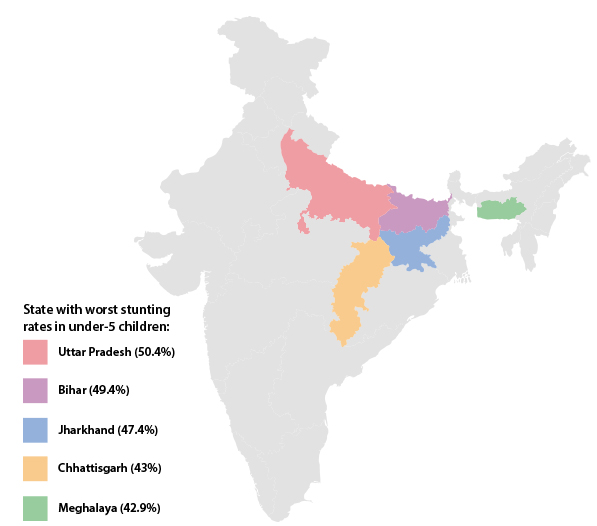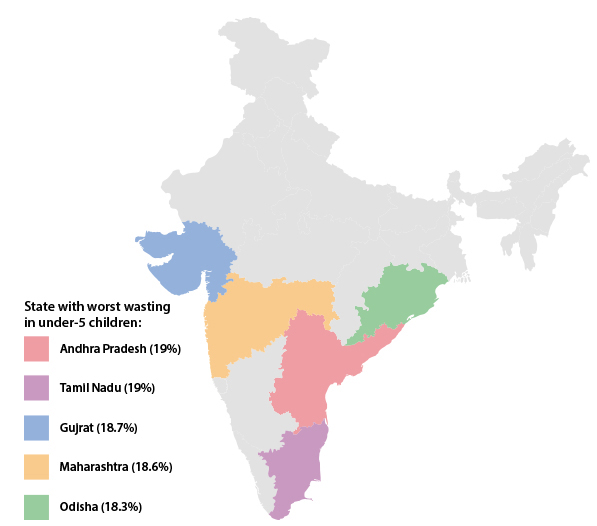
Acute Malnutrition
It is no secret that almost half of Indian children below the age of five years remain malnourished. But behind this dreary statistic lies the harsher reality of Acute Malnutrition.
Severe Acute Malnutrition (SAM)
Severe Acute Malnutrition is defined by a very low weight for height (below -3 z scores of the median WHO growth standards), by having a a mid-upper arm circumference (MUAC) <115 mm, by visible severe wasting or by the presence of nutritional oedema. Decreasing child mortality and improving maternal health depends heavily on reducing malnutrition which is responsible for major deaths among children under 5 years of age.
Moderate Acute Malnutrition (MAM)
Moderate Acute Malnutrition, while not as serious as Severe Acute Malnutrition, is harmful to children because it increases child mortality and exposure to nutrition-related diseases.
Moderate Acute Malnutrition is defined by a low weight for height (below -2 z score of the median WHO growth standards), by having a mid-upper arm circumference (MUAC) between 110mm and 125mm.
1. India Health Report:
2. Current facility based approach is not sustainable:
Currently SAM children are being treated at Nutritional Rehabilitation Centres (NRCs). This facility based approach is not sustainable. Limited NRCs restrict the material and human resource involved in the treatment of SAM. Additionally, this model has a limited geographic reach and is cost intensive in nature.
3. SAM is responsible for increased mortality, and physical and mental stunting:
4. A direct attack on the social contract:
Stunting
Stunting is inadequate height for age, which is indicative of chronic or cumulative nutritional deprivation in early childhood. A stunted child’s height-for-age is below -2 standard deviations from the median height-for-age (termed HAZ) of the WHO child growth standards, while a severely stunted child is below -3 standard deviations.
Wasting
Wasting is inadequate weight for height, which points to acute or short term under-nutrition. A wasted child’s weight-for-height (WHZ) is below -2 standard deviations from the WHO child growth standards, while a severely wasted child is below -3 standard deviations. (Another way to determine severe wasting or severe acute malnutrition is through a measurement of a child’s mid-upper arm circumference (MUAC).
Underweight
Underweight is inadequate weight for age, a composite indicator that encompasses stunting and wasting. An underweight child’s weight-for-age (WAZ) is below -2 standard deviations from the WHO child growth standards; again, a severely wasted child is below -3 standard deviations.
Source: India Health Report: Nutrition 2015


